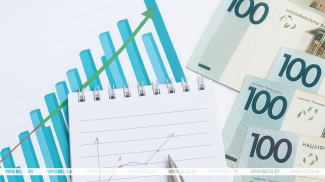
MINSK, 7 October (BelTA) - Belarus' export growth potential is estimated at $5.07 billion. This data is cited in a study by the Eurasian Development Bank on the potential of the industrial sector in EAEU countries. The key findings were presented during the EDB webinar titled "Potential for the Development of High-Value-Added Industries in the Eurasian Region,” BelTA has learned.
An additional increase could amount to 16%, with the overall economic effect reaching $19.73 billion.
The top 10 product categories with the highest export potential include vehicles, machinery and equipment, chemical products, food items, metals, clothing, computers, pharmaceutical products, electrical equipment, as well as rubber and plastic goods.
Belarus ranks 33rd globally in the Economic Complexity Index (an indicator that reflects the level of sophistication and diversification of a country's production capabilities based on an analysis of its exports). The manufacturing industry's share in GDP is 20.3% (or $15.4 billion), with medium and high-tech manufacturing accounting for 19.8% of the manufacturing sector.
Regarding import substitution, the growth potential is also estimated at approximately $5 billion. The greatest prospects lie in the automotive industry, chemical industry, production of machinery and equipment, metals, food products, electrical equipment, computers, textiles, rubber and plastic products, and also finished metal products excluding machinery.
"Belarus ranks among the top in terms of economic complexity. It is one of the most industrially sophisticated economies in our region, according to the international index. Further development is needed. Indeed, where competitive advantages exist, opportunities for export growth and import substitution can be found,” noted Arman Akhunbaev, Head of the Sectoral Analysis Center at the Directorate for Analytical Work of the Eurasian Development Bank.
The industrial sector of the Eurasian region (which includes Armenia, Belarus, Kazakhstan, Kyrgyzstan, Russia, Tajikistan, and Uzbekistan) constitutes the largest segment of the economy, accounting for approximately 31% of the collective GDP. Within this sector, the manufacturing industry plays a pivotal role, generating 44.2% of the industrial gross value added.
An additional increase could amount to 16%, with the overall economic effect reaching $19.73 billion.
The top 10 product categories with the highest export potential include vehicles, machinery and equipment, chemical products, food items, metals, clothing, computers, pharmaceutical products, electrical equipment, as well as rubber and plastic goods.
Belarus ranks 33rd globally in the Economic Complexity Index (an indicator that reflects the level of sophistication and diversification of a country's production capabilities based on an analysis of its exports). The manufacturing industry's share in GDP is 20.3% (or $15.4 billion), with medium and high-tech manufacturing accounting for 19.8% of the manufacturing sector.
Regarding import substitution, the growth potential is also estimated at approximately $5 billion. The greatest prospects lie in the automotive industry, chemical industry, production of machinery and equipment, metals, food products, electrical equipment, computers, textiles, rubber and plastic products, and also finished metal products excluding machinery.
"Belarus ranks among the top in terms of economic complexity. It is one of the most industrially sophisticated economies in our region, according to the international index. Further development is needed. Indeed, where competitive advantages exist, opportunities for export growth and import substitution can be found,” noted Arman Akhunbaev, Head of the Sectoral Analysis Center at the Directorate for Analytical Work of the Eurasian Development Bank.
The industrial sector of the Eurasian region (which includes Armenia, Belarus, Kazakhstan, Kyrgyzstan, Russia, Tajikistan, and Uzbekistan) constitutes the largest segment of the economy, accounting for approximately 31% of the collective GDP. Within this sector, the manufacturing industry plays a pivotal role, generating 44.2% of the industrial gross value added.













